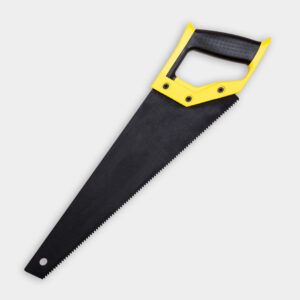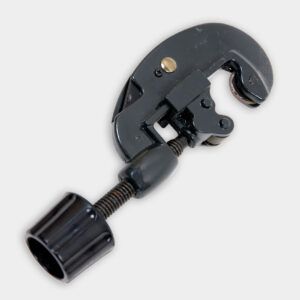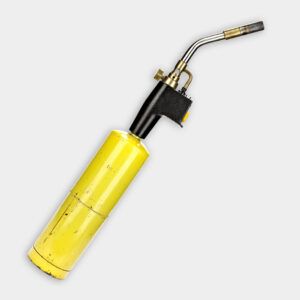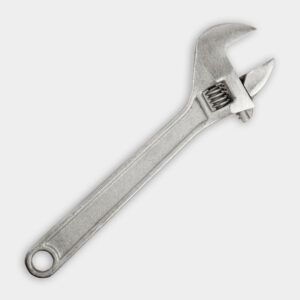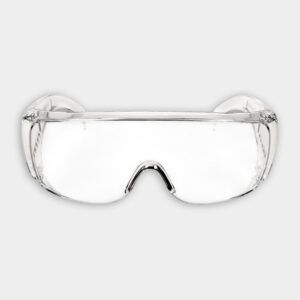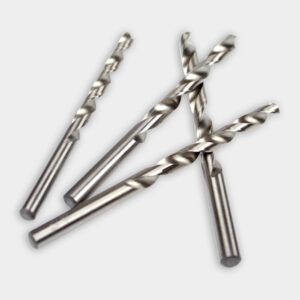Project details
Skill
Cost
Estimated Time
*Cost information in this article sourced from Angi.
A utility sink, or laundry sink, provides a convenient space for tasks like hand-washing delicate clothes, cleaning large items, or even potting plants. Installing a utility sink may seem daunting, but with the right tools and approach, it’s a project many homeowners can tackle.
In this article, we’ll walk you through the process of installing a utility sink, from preparation to the final connections. This Old House plumbing and heating expert, Richard Trethewey, demonstrates the key steps in the video above.
Preparing for Installation
Before you begin the installation process, you’ll need to map out the location of your sink and gather all the necessary materials and tools.
Required Tools and Materials
To install a utility sink, you’ll need the following:
- Adjustable wrench
- Carbide-tipped masonry bit (0.25 inch)
- Copper pipes and fittings
- Drill or driver
- Emery cloth
- Faucet
- Flexible supply lines
- Hammer
- Plumber’s putty
- Propane torch
- PVC pipes and fittings
- PVC pipe saw
- Safety glasses
- Solder and flux
- Tubing cutter
- Utility sink
Choosing the Right Location
Selecting the appropriate location for your utility sink is crucial. Consider the following factors:
- Accessibility: Ensure the sink is easily accessible for its intended uses.
- Proximity to existing plumbing: Choose a spot near existing water supply and drain lines to minimize additional piping.
- Space requirements: Allow enough room for comfortable use and any storage needs.
When selecting a location, you should also consider the distance from electrical outlets. This is especially crucial if you plan to use the sink for tasks involving electrical appliances, such as cleaning tools or equipment. Additionally, the flooring material in the chosen area should be water-resistant to handle any spills or splashes that may occur during use.
Installing the Drain System
The first step in installing a utility sink is setting up the drain system. This process involves connecting to the existing drain pipe and creating a new drain and vent system for the sink.
Connecting to the Existing Drain
- Turn off the water supply to the area where you’ll be working.
- Locate the existing drain pipe and mark the section where you’ll make the cut.
- Use a PVC pipe saw to cut out the marked section carefully.
- Install a new Wye-fitting into the cut section of the drain pipe.
Creating the New Drain and Vent System
- Assemble the PVC pipes and fittings for the new drain and vent system.
- Connect a 45-degree angle fitting to the Wye-fitting you installed earlier.
- Install a TY fitting above the 45-degree angle to create the vent for the sink.
- Extend the vent pipe upward to connect with the existing vent stack.
- Use PVC cement to glue all connections securely.
It’s important to ensure that all connections are tight and secure. Any loose fittings can cause leaks and disrupt the sink’s drainage. Additionally, if the drain system is not properly vented, it can lead to slow drainage or even sewer gases escaping into your home.
Setting Up the Sink and Faucet
With the drain system in place, it’s time to install the sink and faucet. This process involves positioning the sink and securing the faucet.
Positioning the Sink
- Place the sink in its intended location, aligning it with the newly installed drain system.
- Insert the sink’s chrome tailpiece into the PVC trap assembly.
- Tighten the compression nut on the tailpiece to secure the trap.
Installing the Faucet
- Apply a bead of plumber’s putty around the base of the faucet.
- Place the faucet onto the sink deck, aligning it with the pre-drilled holes.
- From underneath the sink, tighten the mounting nuts to secure the faucet in place.
- Wipe away any excess plumber’s putty that may have squeezed out.
When installing the faucet, double-check that the hot and cold water lines are correctly aligned with the faucet handles. Additionally, make sure to securely tighten all connections to prevent any leaks from the utility sink.
Connecting the Water Supply
The final step in installing a utility sink is connecting it to the water supply. Connection involves tapping into existing water lines and running new pipes to the sink.
Tapping Into Existing Water Lines
- Locate the hot and cold water supply pipes.
- Turn off the water supply and drain the pipes.
- Cut into the existing pipes using a tubing cutter.
- Clean the cut ends with an emery cloth and apply flux.
- Solder tee fittings into the cut sections of pipe.
Running New Supply Lines
- Install copper wall anchors to support the new piping.
- Run copper pipes from the tee fittings to the sink location.
- Attach flexible supply lines to the new copper pipes and connect them to the faucet.
- Turn the water supply back on and check for leaks.
At this point, you’ll need to test the new supply lines thoroughly. Meticulous testing is important, especially if you added water to a new structure, like installing a utility sink in a barn. Start by turning both the hot and cold water taps on and let the water run for a few minutes. Check all connections for any signs of leaks. If you notice any drips or moisture, tighten the connections and test again until you are certain that the installation is leak-free.
Utility Sink Finishing Touches
After completing the installation, there are a few final steps to make sure your utility sink is working properly.
Testing the Installation
- Turn on hot and cold water taps to check for proper flow and temperature.
- Run water through the drain to ensure proper drainage and check for leaks.
- Adjust the P-trap if necessary to ensure a proper seal and prevent sewer gases from entering.
Sealing and Caulking
To prevent water damage and improve the appearance of your installation:
- Apply silicone caulk around the edges of the sink where it meets the wall or countertop.
- Seal any gaps around pipe penetrations through walls or floors.
- Allow the caulk to dry completely before using the sink.
A well-sealed sink area helps prevent water from seeping into the surrounding walls or countertop, which can cause long-term damage. Use a high-quality silicone caulk designed for wet areas for the best results. Regularly check the caulking and reapply if necessary to maintain a strong seal.
Adding Accessories
To enhance the functionality of your new utility sink, consider adding a few accessories:
- Faucet spray hose: This attachment can make rinsing large items or washing pets much easier.
- Sink grid: Protect the bottom of your sink from scratches and damage by using a sink grid.
- Under-sink storage: Organize cleaning supplies or household items neatly within reach.
- Drain pump: If you’re installing a basement utility sink you may need a drain pump to help push water out of the system after it goes down the drain.
Our Conclusion
Installing a utility sink is a valuable home improvement project that can significantly enhance the functionality of your laundry room or workspace. While it requires some plumbing skills, many homeowners can successfully complete this task with proper planning and care.
